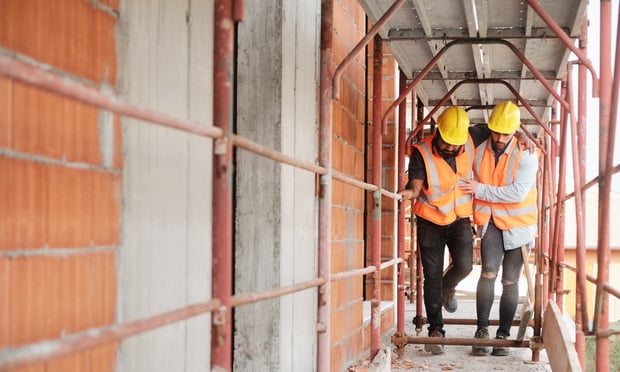Editor's Note: The 68th annual Workers' Compensation Educational Conference (WCEC) will be held Aug. 18 – 21 at the Orlando World Center Marriott. Presented by the Workers' Compensation Institute, the WCEC is the largest gathering of its kind in the nation and offers discipline-specific programs and break-out sessions from hundreds of national speakers as well as CEU opportunities. During the event, NU Executive Managing Editor Shawn Moynihan will present the PC360/NU Award for Excellence in Workers' Comp Risk Management.
The annual Safety and Health Conference, held in conjunction with the Workers' Compensation Educational Conference (WCEC), celebrates its 25th year in 2013 by making the subject of workplace safety a major emphasis of the entire conference.
An outgrowth of the Governor's Safety Conference, the Safety and Health Conference was established by the governor of Florida as an attempt to place more emphasis on workplace safety. Eventually, the conference was absorbed by the Workers' Compensation Institute. Workplace Safety and Health now takes its place as a major component of the WCEC.
Reflecting on the transition of the Safety Conference as a stand-alone conference to being a major component of a larger and more integrated part of the annual workers' compensation event, General Chairman of the Workers' Compensation Institute Jim McConnaughhay, stated, “I think the Safety and Health Conference today is a reflection of the changing times and the evolution of the safety industry in America in the last 25 years. Initially, the safety industry was considered by some as a stand-alone profession that dealt with one component of the workplace, sometimes separate and apart from the production or core operations of a business. As the economy turned, all I would hear from safety professionals was that they were the first to be laid off when a business downsized. In retrospect, this may have been a suggestion that since safety specialists were not a part of why particular businesses operated, they were the most 'expendable.'
“As a part of overseeing the merged conferences, we try to determine the professions and job classifications of our attendees,” McConnaughhay continued. “What we began to see was less and less attendees identifying themselves as 'safety professionals.' What was happening was that they began identifying themselves as 'risk managers,' 'HR professionals,' 'brokers,' 'claims professionals,' 'insurance managers,' 'safety consultants' and various other designations unique to particular industries. Our conclusion from this trending was that the task of workplace safety was being absorbed by others not just safety specialists. This transition of job responsibilities was based on the economy of a business operation initially but as time passed, workplace safety seemed to evolve into an integrated part of a business as a whole with safety specialists assuming additional job responsibilities.
“It was in response to this witnessed refocusing of safety that the Safety and Health Conference moved to reaching out to this 'new safety professional' in need of educational help at a level that was both affordable and at the same time relevant to their needs. It is this new safety professional that the conference focuses on, who oftentimes plays a significant role in several aspects of the business operation, while at the same time recognizing that the certified safety professional remains a vital part of maintaining a safe workplace for the American worker,” McConnaughhay said.
In recognition of this changing role of the safety professional, the risk management breakouts at the conference have been expanded to a full day of presentations to include safety and health issues relevant to risk managers. These breakouts are led by industry professionals from throughout the country.
The national workers' compensation review sessions have been enhanced to include general safety issues and concerns in recognition of the interrelationship between workers' compensation results and safety concerns. Unique safety issues for temporary staffing companies and professional employer organizations (PEOs) and persons dealing with these entities will be the subject of breakout sessions for these interest groups.
The medical community also gets involved in workplace safety with special breakouts on accidents caused by employees working long hours, in excessive heat situations, and while under the influence of prescribed medications.
In short, the conference agenda by its breakout organization recognizes the importance of safety on an integrated basis throughout the business operation of an employer, regardless of how the various “players” within a business organization are identified. No longer can industry look upon safety and health as an independent agency within a particular business to be judged a success or failure based on perceived values to bottom line profitability.
The realities of safety and health are that whether intended or not, safety and health are integral parts of every aspect of business, a significant factor in employee morale, and a “value added” component of any business operation that in fact can be quantified. It is to this initiative that the conference focuses on in providing meaningful educational opportunities for safety professionals.
America's safety regulators continue to play a significant role in the conference, with OSHA presenting breakout sessions on initiatives within that agency and providing Certificates of Completion for the OSHA 10-hour “General Industry” course. NIOSH representatives will be presenting on their new emphasis of total worker health including safety and health hazards on-the-job and the influence of non-working health issues on workplace safety. NIOSH-sponsored Educational Research Centers at the University of South Florida, University of North Carolina, University of Alabama, and Auburn University will present on regional issues of concern in the safety industry and the U.S. Department of Labor will add their statistical analytic capabilities to better define what is occurring in the workplace as far as safety initiatives are concerned.
The WCEC is sponsored by the Workers' Compensation Institute, a non-profit organization specifically organized to provide education within the workers' compensation community with safety and health being considered an extremely important component of this industry as well as an important factor in every aspect of a business operation.
Want to continue reading?
Become a Free PropertyCasualty360 Digital Reader
Your access to unlimited PropertyCasualty360 content isn’t changing.
Once you are an ALM digital member, you’ll receive:
- Breaking insurance news and analysis, on-site and via our newsletters and custom alerts
- Weekly Insurance Speak podcast featuring exclusive interviews with industry leaders
- Educational webcasts, white papers, and ebooks from industry thought leaders
- Critical converage of the employee benefits and financial advisory markets on our other ALM sites, BenefitsPRO and ThinkAdvisor
Already have an account? Sign In Now
© 2024 ALM Global, LLC, All Rights Reserved. Request academic re-use from www.copyright.com. All other uses, submit a request to [email protected]. For more information visit Asset & Logo Licensing.








